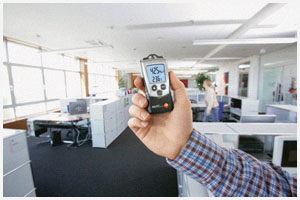
In order to provide a healthy and productive working environment in a workplace, certain criteria must be met and complied with. Creating a working environment at a level where employees will not be disturbed by factors such as temperature, humidity and air flow is essential for thermal comfort. If there are no thermal comfort conditions in the working environment, first you will feel distress and then you will experience discomfort. Air temperature, humidity, air flow velocity, thermal radiation are the reasons affecting thermal comfort in the working environment.
The fact that these factors are not suitable for the human body reduces the working capacity of the person and the work efficiency. The factors such as temperature, airflow and humidity above the working environment may disturb the employee and create negative conditions both in terms of work efficiency and occupational safety and health. Air temperature, air humidity, air flow velocity, and thermal radiation are the main issues examined in terms of thermal comfort.
First of all, the temperature or coldness of the working environment is measured by using a dry thermometer and the temperature of the air is determined. then the humidity of the air in the working environment is calculated and the general approach is that the relative humidity in a workplace is between 30 and 65 percent. Measurements are made using a hygrometer.
Then the air flow rate is adjusted and measurements are made using anemometer. Then thermal radiation is calculated using the globe thermometer.
In the case of thermal comfort, in general terms, although only temperature comes to mind, the situation is very different and the simultaneous effect of the thermal comfort components of temperature, relative humidity, air flow rate and radiant temperature quantities yields the definition of sensible temperature, ie effective temperature.
It is not only the conditions mentioned above that affect thermal comfort. The nature of the work that affects thermal comfort (whether the job is heavy or light), physical structure of the employee (fat or weak). the gender of the employee (male or female), the health status of the person (healthy or unhealthy), dressing status during the work (whether or not wearing appropriate clothing for work).
According to the regulation, the temperature and humidity ratio in the closed working environments should be moderate although appropriate to the quality of the work performed. For this purpose, test organizations make temperature and humidity measurements in the workplace and help companies to revise their working conditions. Temperature, humidity and pressure measurements are evaluated within the framework of legal regulations.
Thermal comfort measurements are the procedures that must be carried out by experts and organizations. As a matter of fact, it is essential to pay great attention to these measurements where the latest system devices are made with the contribution of technology.
For more information, you can reach our expert team from our contact addresses and phone numbers and you can get answers to all your questions.